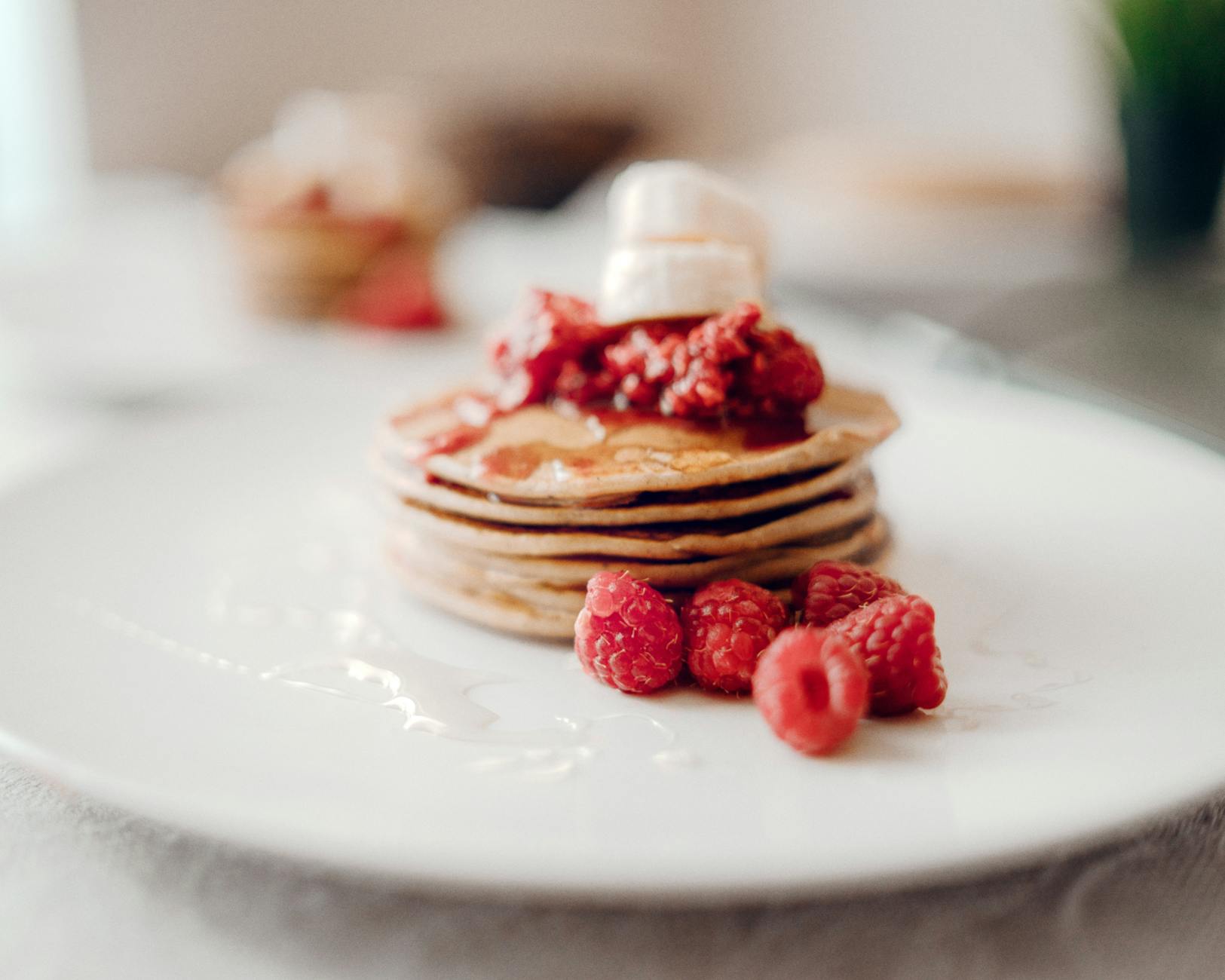Easy Pancake Recipe Without Baking Powder

Ever been halfway through mixing pancake batter when you realize—no baking powder? Don’t trash your breakfast dreams just yet.
I’ve been there more times than I care to admit. Standing in my kitchen on lazy Sunday mornings, craving fluffy pancakes but missing that one crucial ingredient. After countless experiments (and some spectacular failures), I’ve perfected an easy pancake recipe without baking powder that rivals the classic version.
You’ll be shocked how simple substitutions like whipped egg whites can create that same airy texture you’re after. No emergency store runs needed.
But here’s what most replacement recipes don’t tell you about getting that perfect golden-brown finish without the chemical leavener…
Why Traditional Pancakes Don’t Actually Need Baking Powder
The Science Behind Fluffy Pancakes
Forget what you’ve been told about needing baking powder for fluffy pancakes. The real magic happens when you understand the basic science.
When you mix flour with liquid, gluten forms. Overmix your batter, and you’ll get tough pancakes. But give it just enough gentle folding, and you’ll create a tender structure that can hold air bubbles.
The real secret? It’s all about air incorporation. When you whip your eggs well before adding them to your batter, you’re creating thousands of tiny air pockets. As your pancake cooks, these pockets expand from the heat, giving you that coveted rise.
And here’s something the baking powder companies don’t want you to know: a little acid (like lemon juice or vinegar) combined with baking soda works exactly the same way. Or skip both entirely!
Common Misconceptions About Pancake Ingredients
“You absolutely need baking powder for pancakes.” Nope. Complete myth.
People have been making delicious, fluffy pancakes for centuries before baking powder was even invented in 1843. The truth is, pancakes can rise beautifully without it.
Another whopper? “More eggs make pancakes rubbery.” Actually, properly beaten eggs create structure and lightness. The problem isn’t the eggs—it’s how you’re using them.
Many home cooks also believe that pancake batter should be smooth. Wrong again! A few lumps are your friends. They mean you haven’t overworked the gluten, which keeps your pancakes tender.
Historical Pancake Recipes Before Baking Powder Existed
Ancient civilizations weren’t exactly running to the store for Clabber Girl, yet somehow managed to enjoy pancakes just fine.
Roman cookbooks from the 1st century AD describe “alia dulcia” (sweet things)—essentially pancakes made with eggs, milk, and honey. No chemical leaveners in sight!
Medieval European cooks relied on fermentation and egg whites to create lift in their pancakes. By allowing batters to rest, natural yeasts would create bubbles. Smart, right?
Native American tribes made corn pancakes using just cornmeal, water, and sometimes wild fruits. These delicious flatbreads didn’t need any modern ingredients to become staples in their cuisine.
Even classic French crêpes—technically a pancake—contain zero leavening agents. They rely entirely on a thin batter and proper cooking technique for their perfect texture.
Essential Ingredients for No-Baking-Powder Pancakes

All-Purpose Flour: The Foundation of Your Pancakes
You can’t make pancakes without flour—it’s the backbone of those fluffy morning treats. All-purpose flour works perfectly for no-baking-powder pancakes because it contains just enough protein to give structure without making them tough.
The trick? Sift your flour before measuring. This adds air into the mixture, which helps your pancakes rise even without baking powder. For every cup of pancakes, you’ll need about 1 to 1½ cups of all-purpose flour, depending on how thick you like them.
Don’t have all-purpose? Cake flour makes exceptionally tender pancakes, while whole wheat flour adds a nutty flavor (though you might need extra liquid as it absorbs more).
Alternative Leavening Agents You Already Have at Home
No baking powder? No problem! Your kitchen is full of alternatives:
-
Whipped egg whites: The secret weapon of fluffy pancakes. Beat them until stiff peaks form, then fold gently into your batter. The air bubbles do all the heavy lifting.
-
Carbonated water: Swap regular water with seltzer or club soda. Those bubbles create instant fluffiness.
-
Yogurt or buttermilk: The acidity reacts with baking soda (if you have it) to create lift. Even without baking soda, the fermentation in these ingredients adds a slight rise.
-
Self-rising flour: Already contains leavening agents, making it a one-and-done substitution.
Sweeteners That Enhance Flavor
Sugar doesn’t just sweeten—it caramelizes for that golden-brown pancake exterior. Here’s what works best:
-
Granulated sugar: The classic choice, about 2-3 tablespoons per cup of flour.
-
Brown sugar: Adds moisture and a caramel undertone.
-
Honey or maple syrup: Brings natural sweetness and helps with browning. Reduce other liquids slightly if using these.
-
Vanilla extract: Not a sweetener technically, but a few drops amplify whatever sweetener you choose.
The key is balance—too much sugar and your pancakes will burn before they’re cooked through.
The Right Liquid Ingredients for Perfect Consistency
The batter consistency makes or breaks your pancakes. You’re aiming for something that pours slowly but spreads on its own.
Milk is the standard, but alternatives each bring something special:
-
Whole milk: Creates rich, tender pancakes
-
Plant milks: Almond milk makes lighter pancakes; coconut milk adds tropical flavor
-
Buttermilk: Adds tanginess and helps create tenderness
-
Yogurt thinned with milk: Makes exceptionally moist pancakes
For ultra-fluffy results, use room-temperature liquids—cold ingredients can shock the batter and prevent proper rising.
Optional Add-ins for Flavor Variations
Plain pancakes are great, but mix-ins transform them into something special:
-
Fruits: Blueberries, mashed bananas, or diced apples fold in beautifully
-
Spices: Cinnamon, nutmeg, or cardamom (just a pinch!)
-
Chocolate: Mini chips melt into pockets of gooey goodness
-
Nuts: Chopped pecans or walnuts add crunch
-
Extracts: Almond, lemon, or orange bring unexpected flavor notes
The golden rule: don’t overload the batter. About ¼ to ½ cup of add-ins per cup of flour keeps the pancakes manageable while cooking.
For the best results, fold heavier ingredients (like blueberries) in last, and sprinkle things like chocolate chips directly onto pancakes after pouring the batter.

